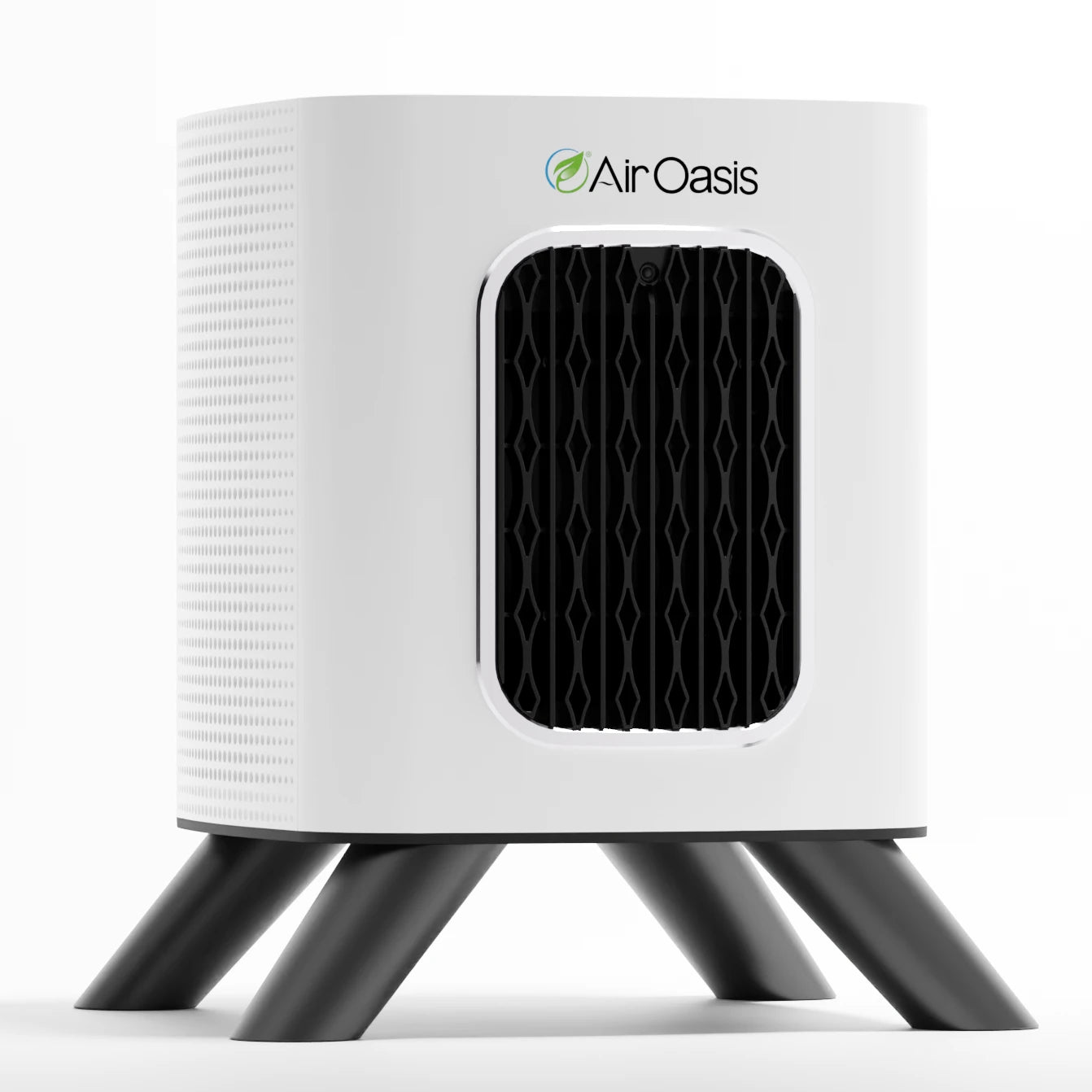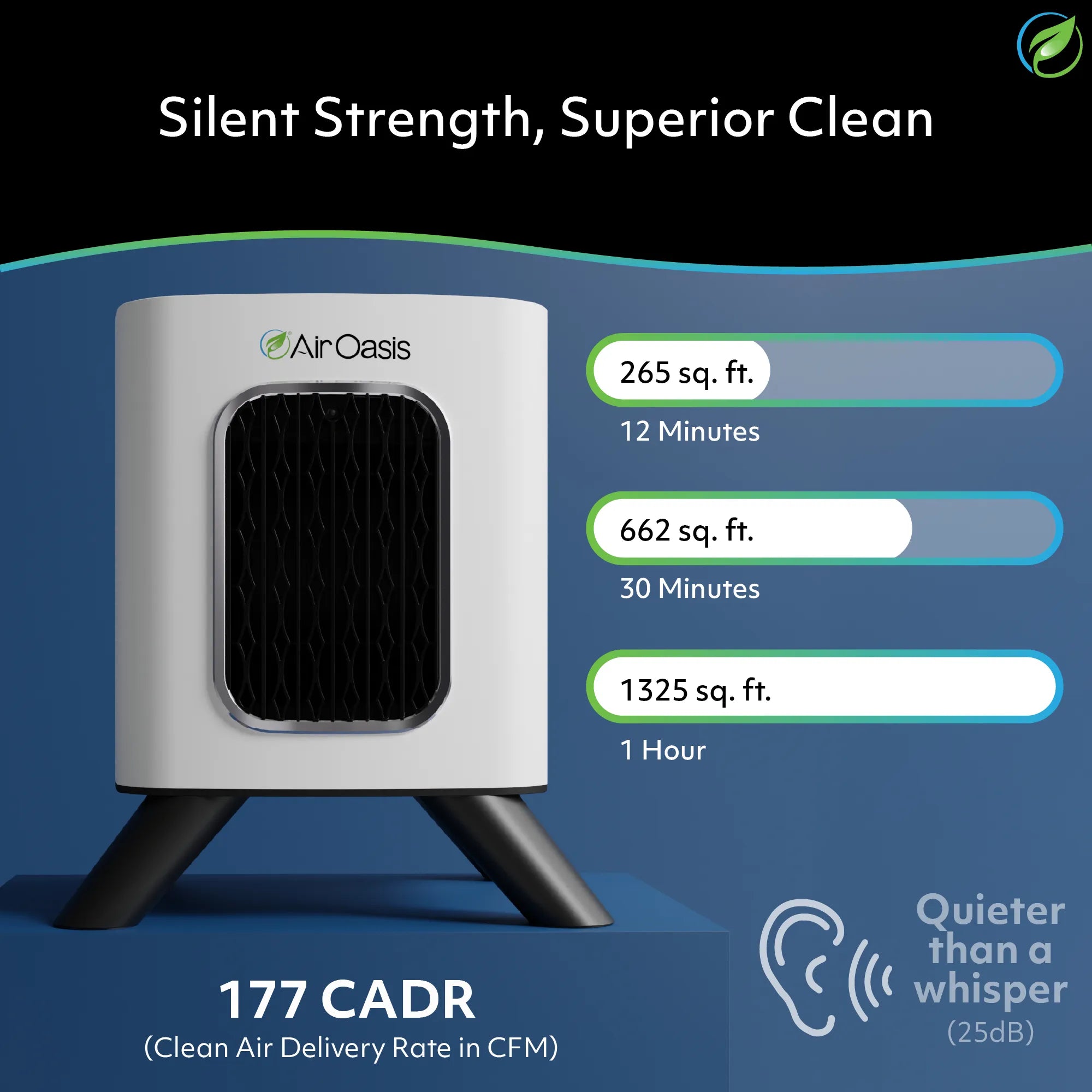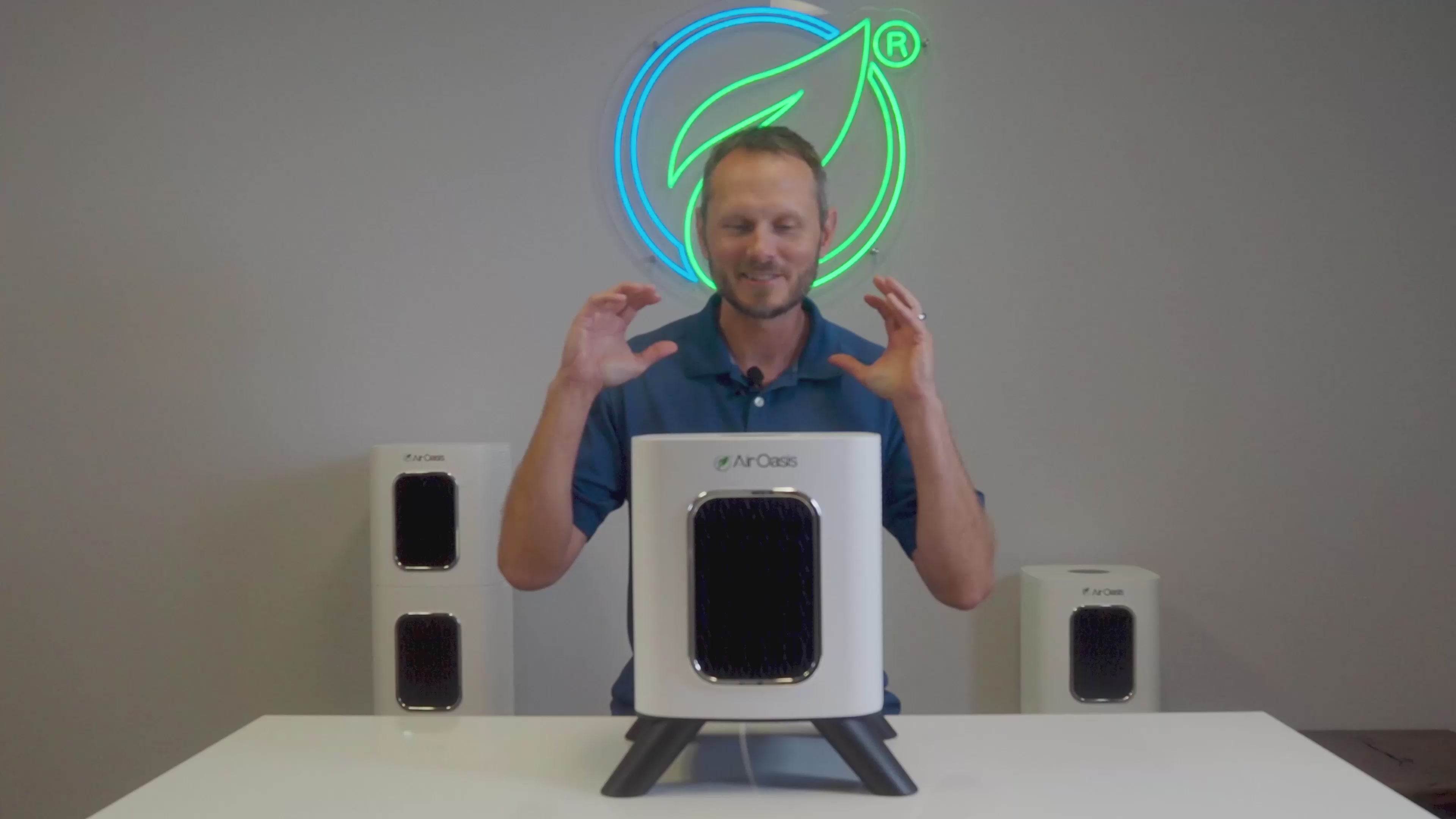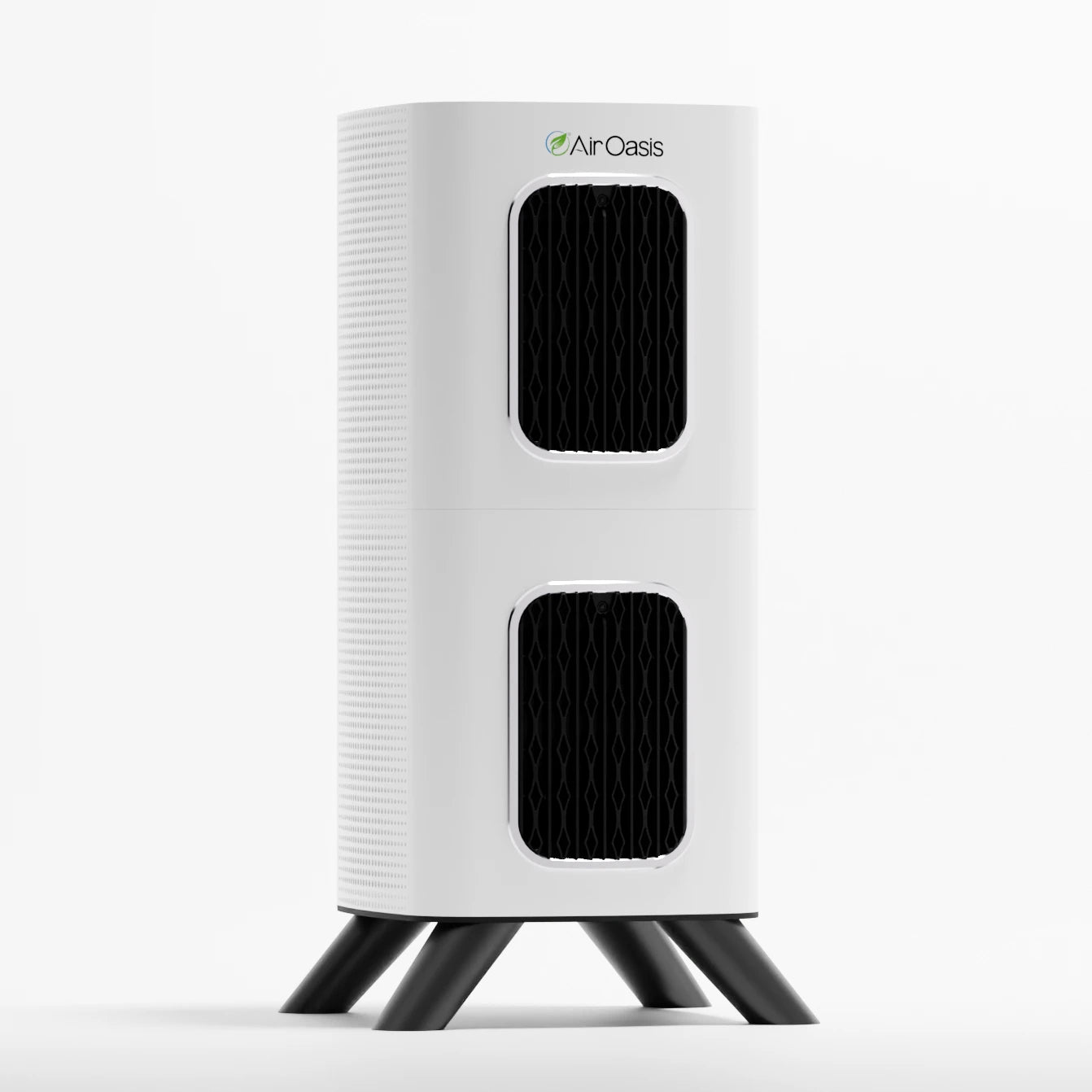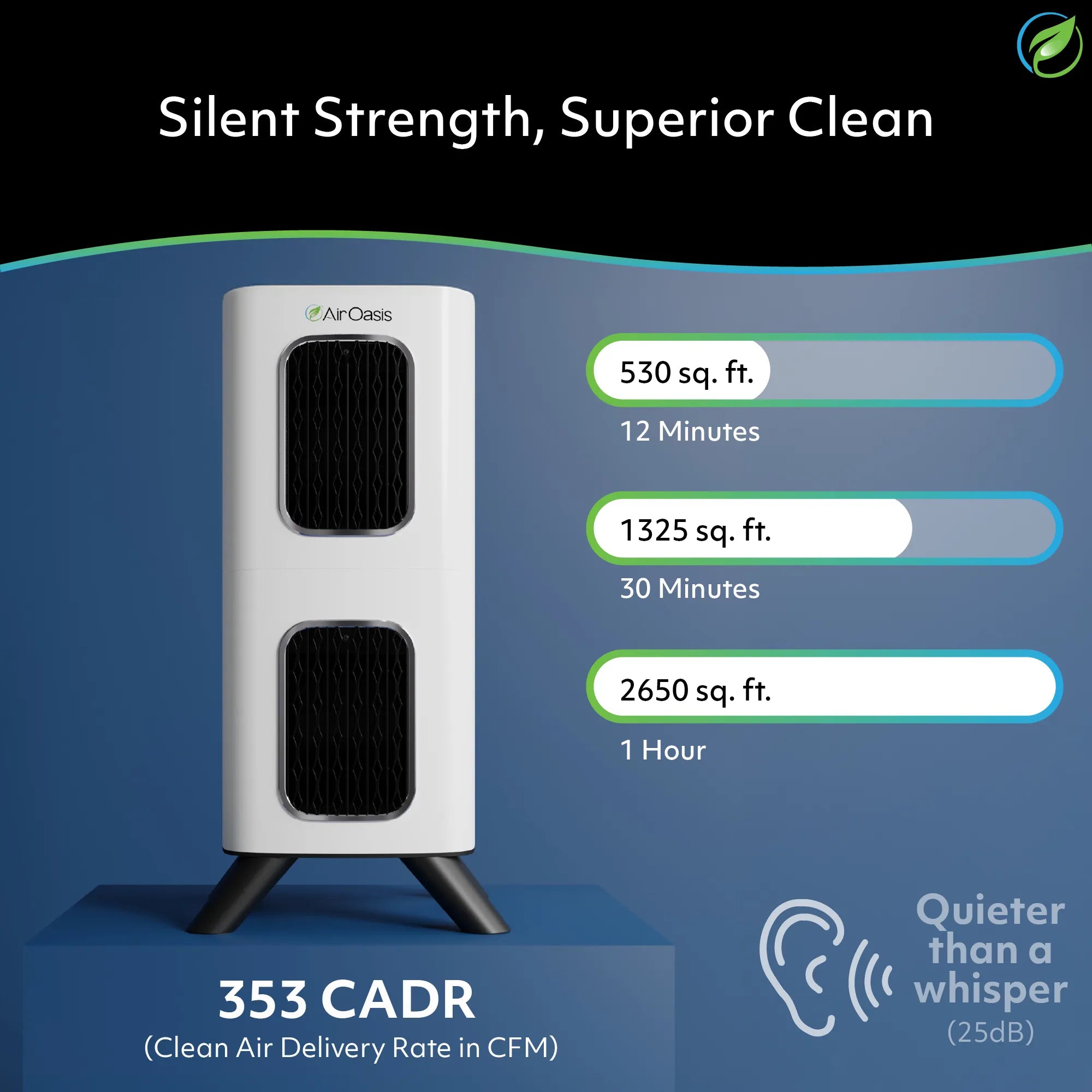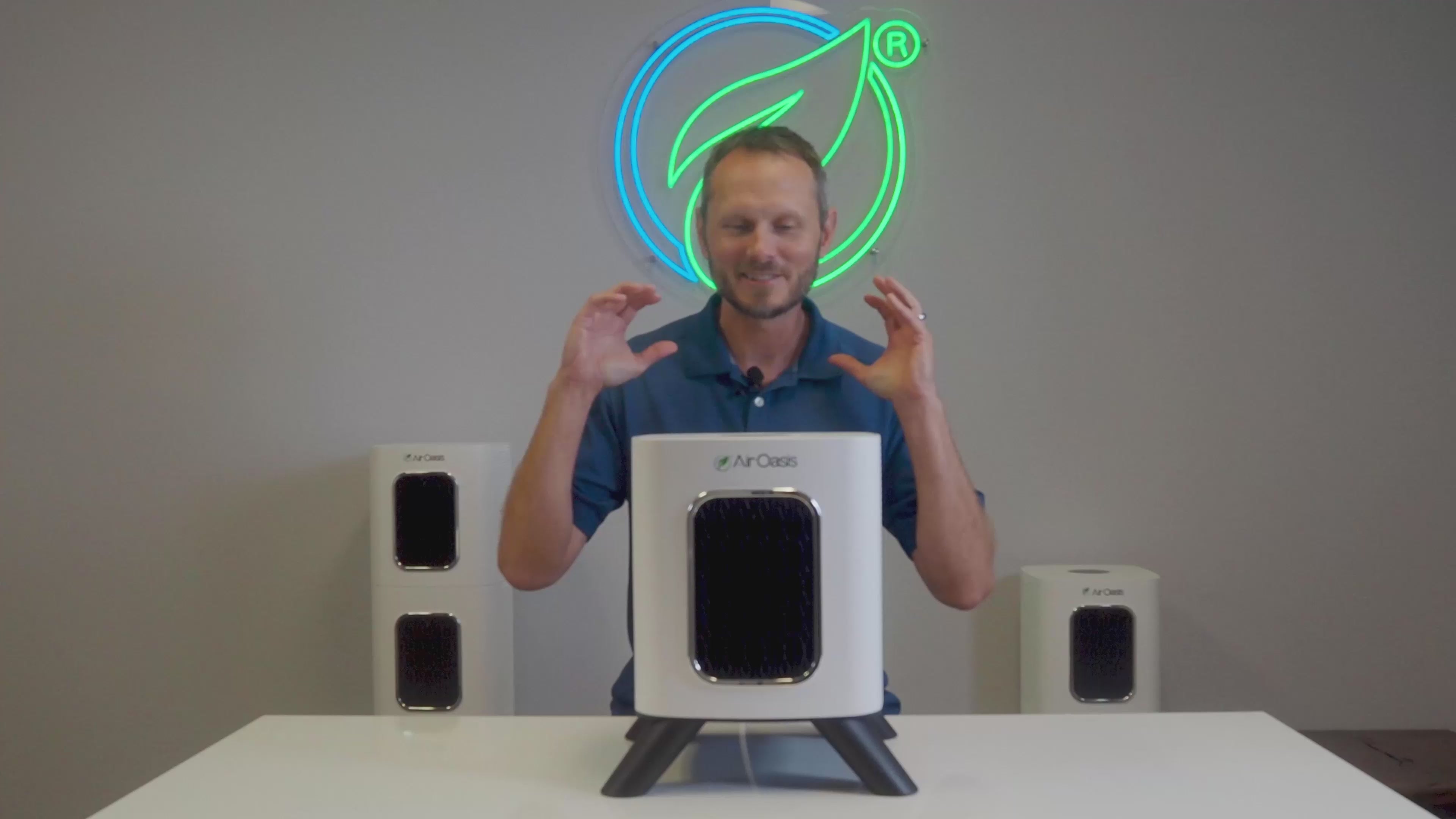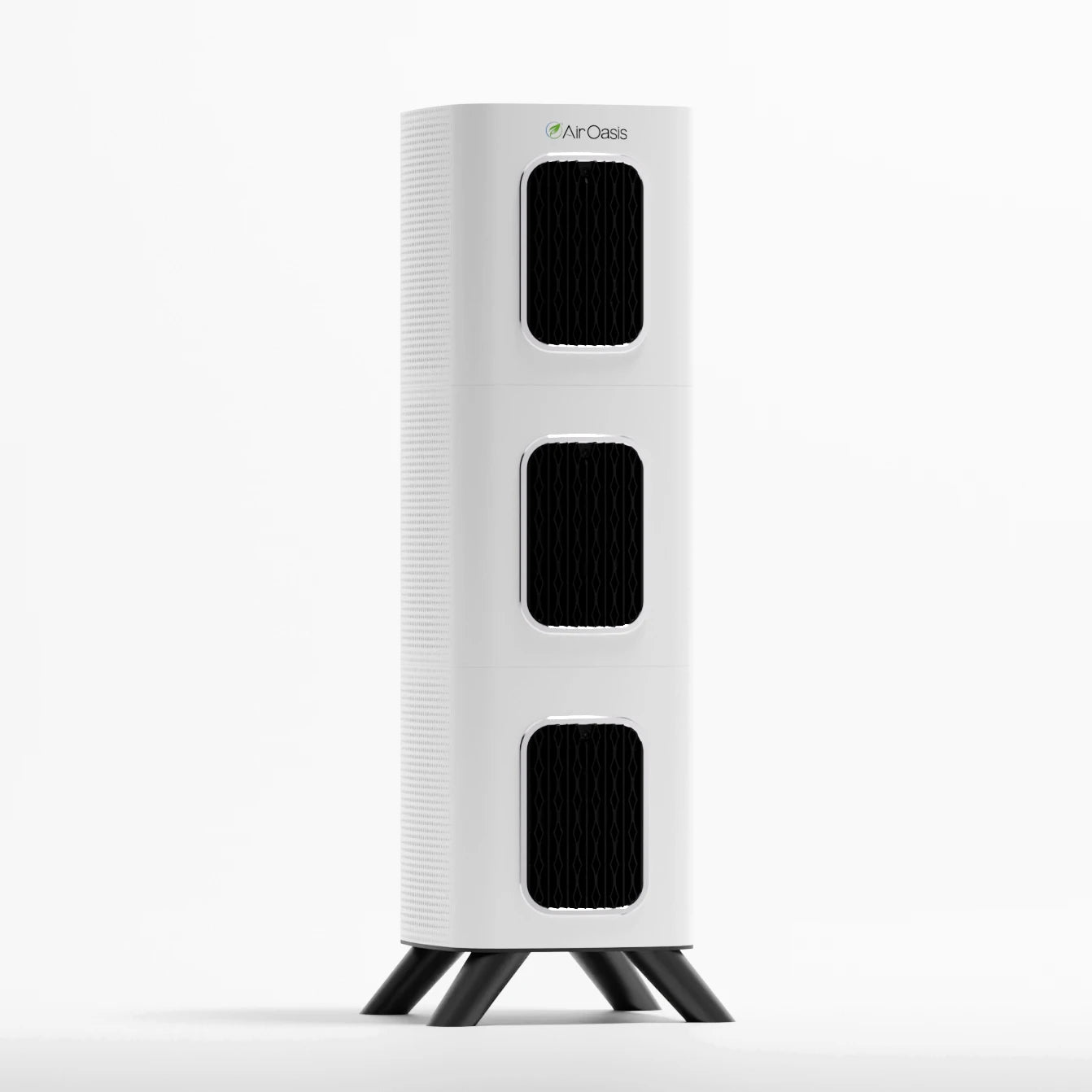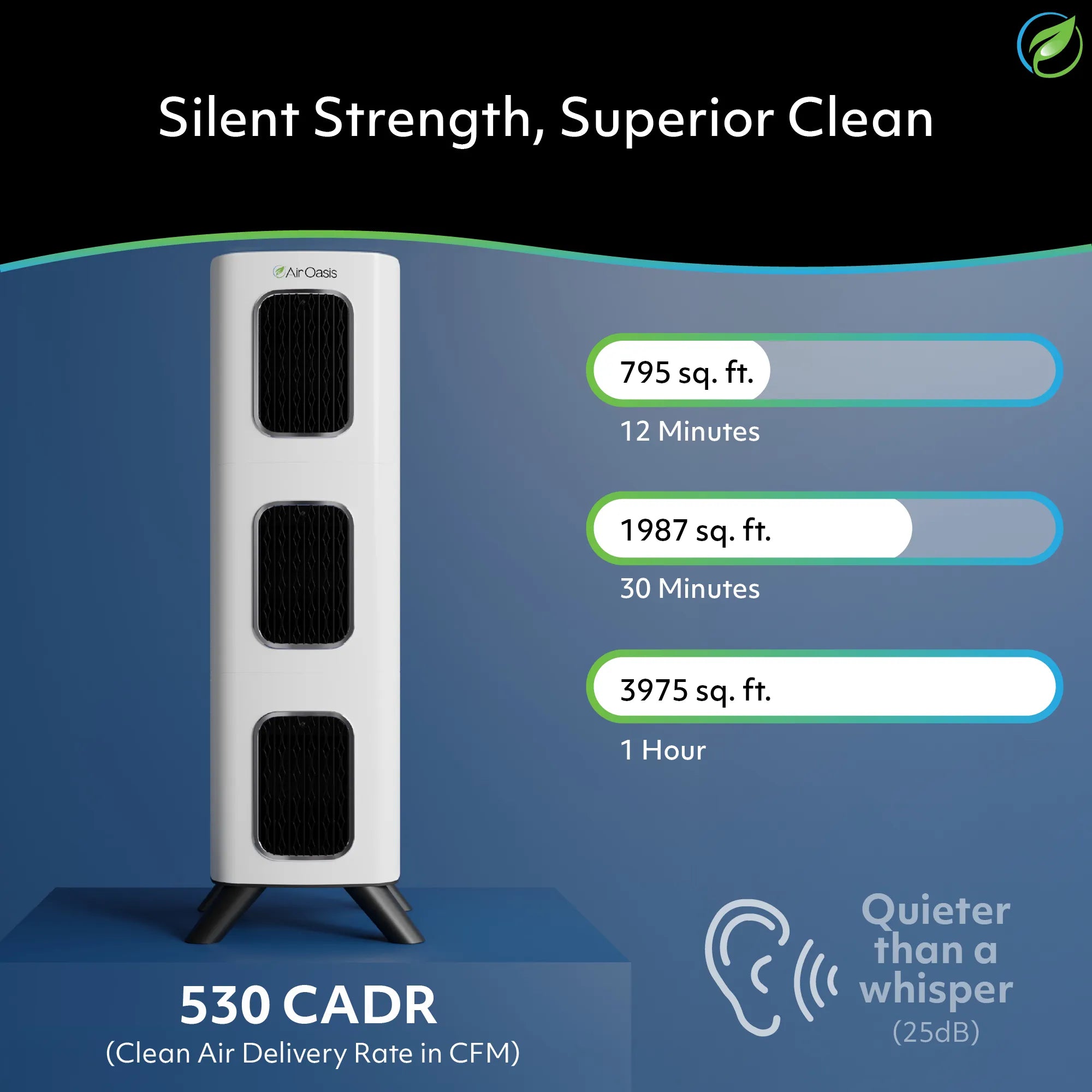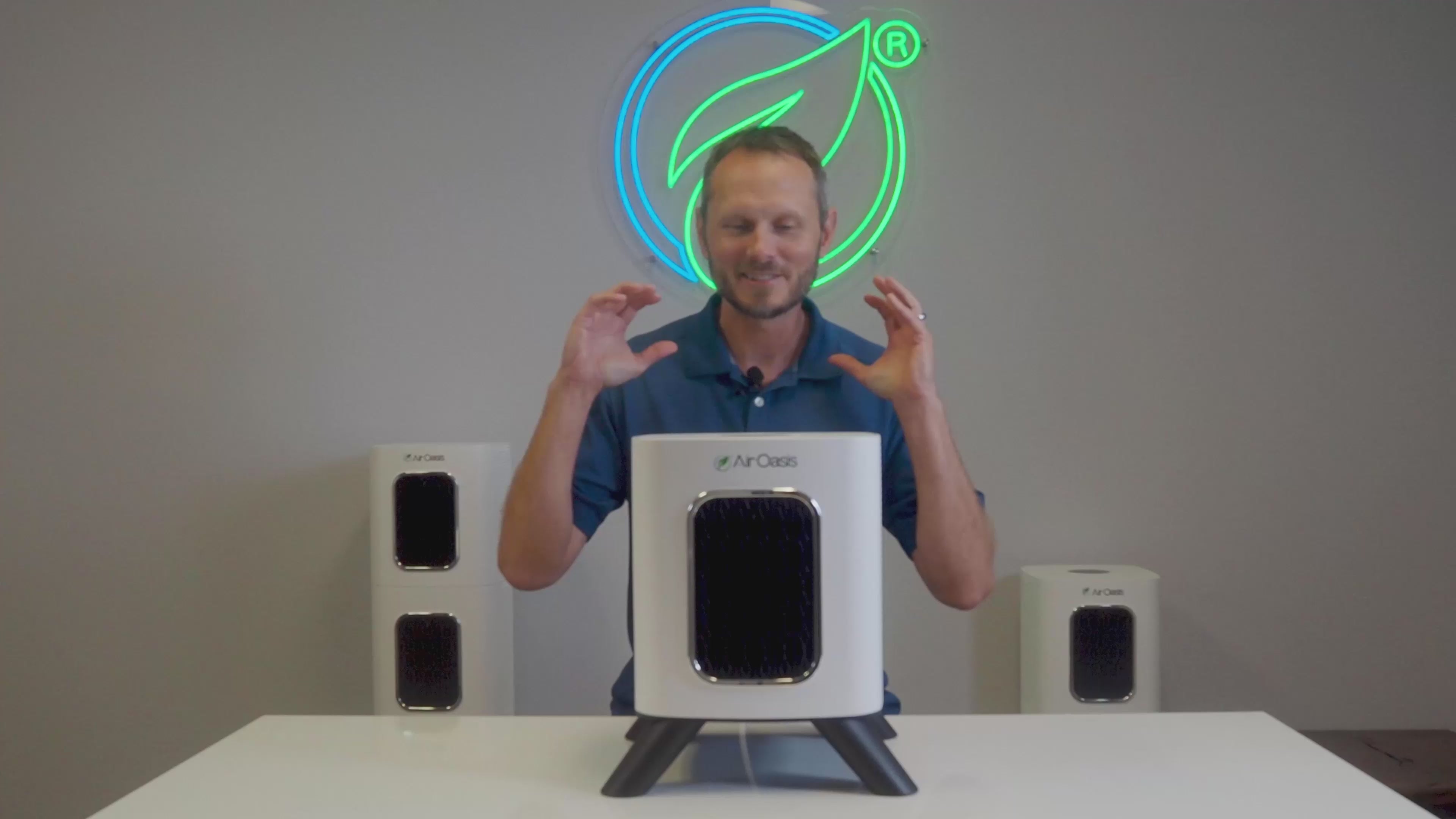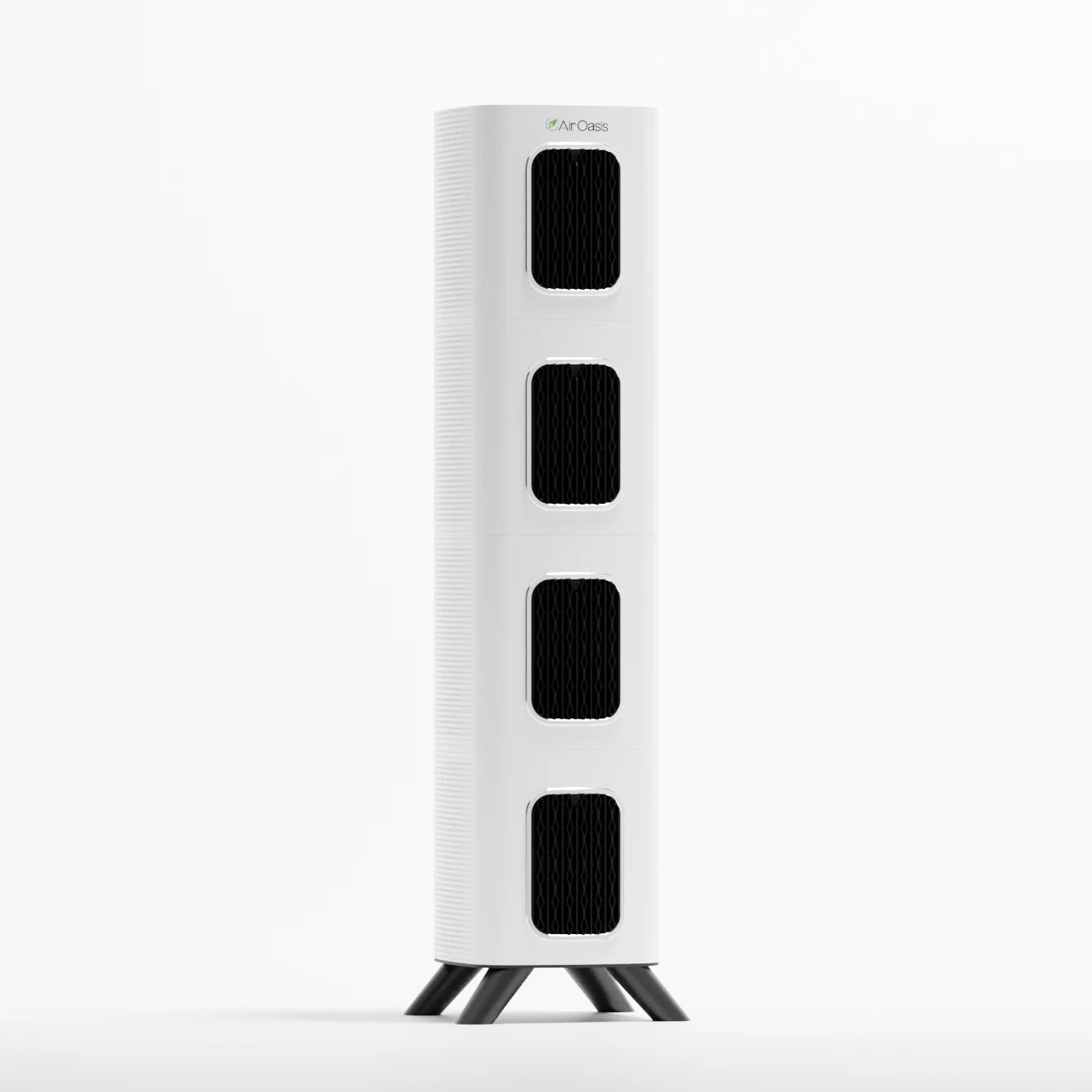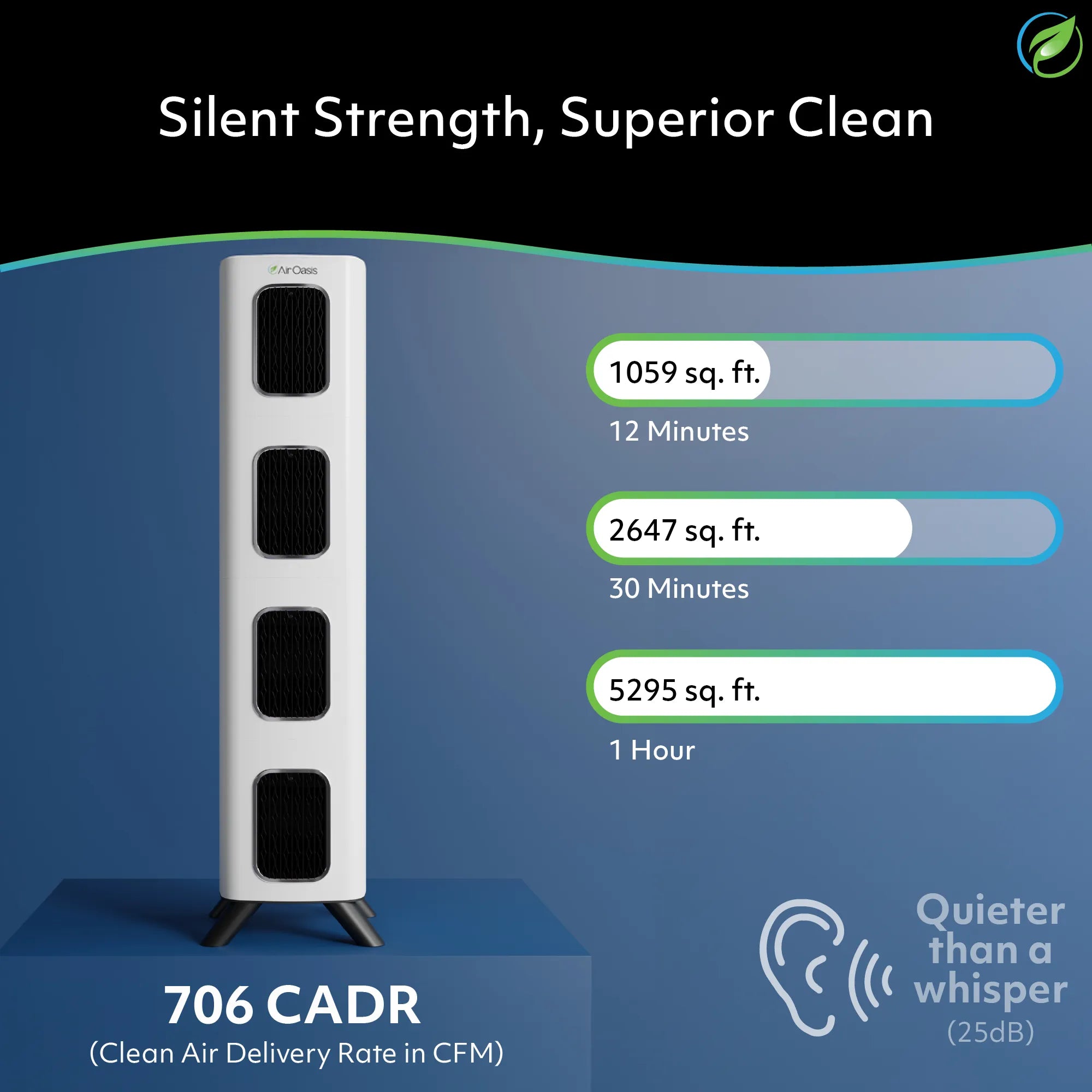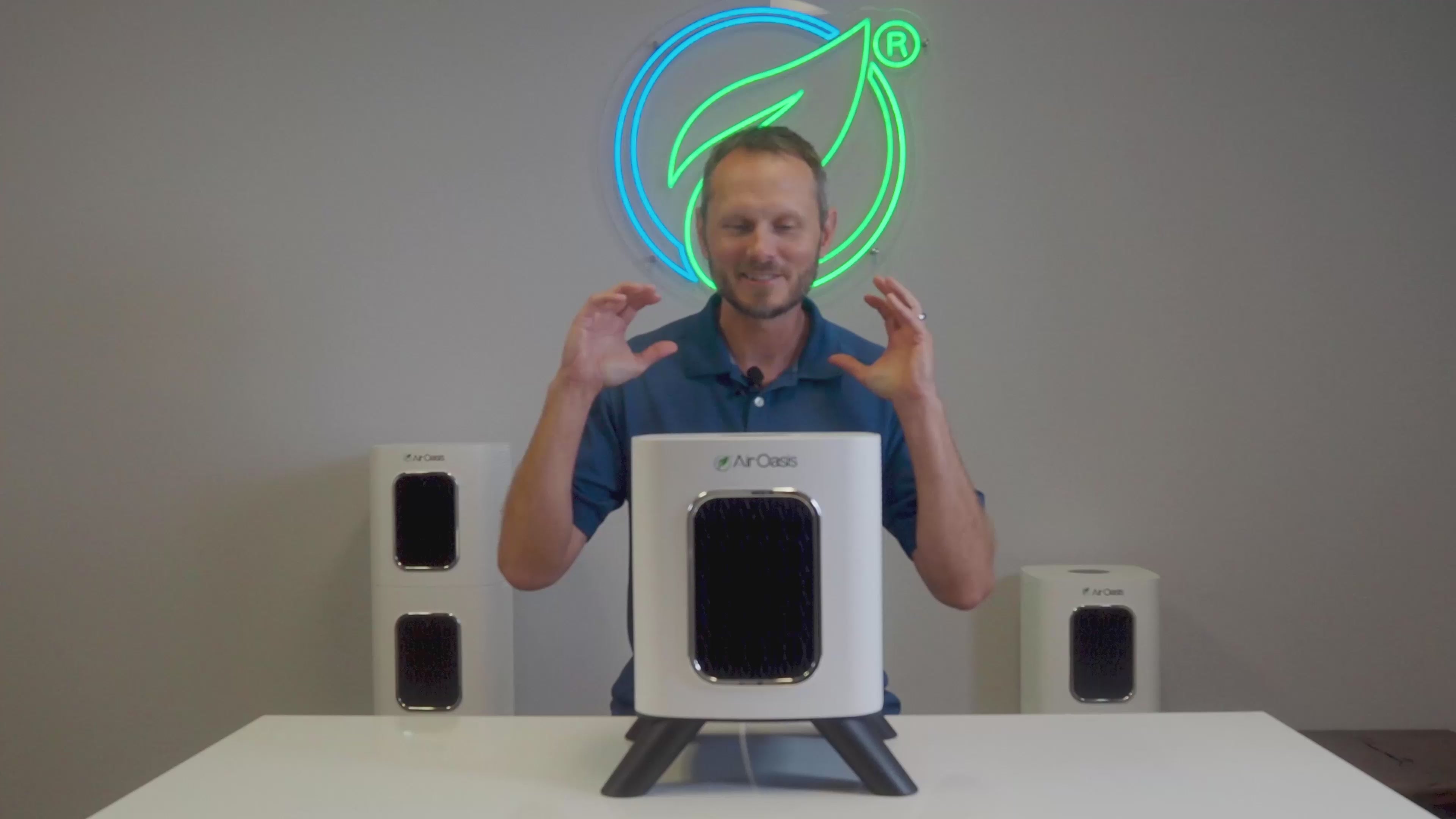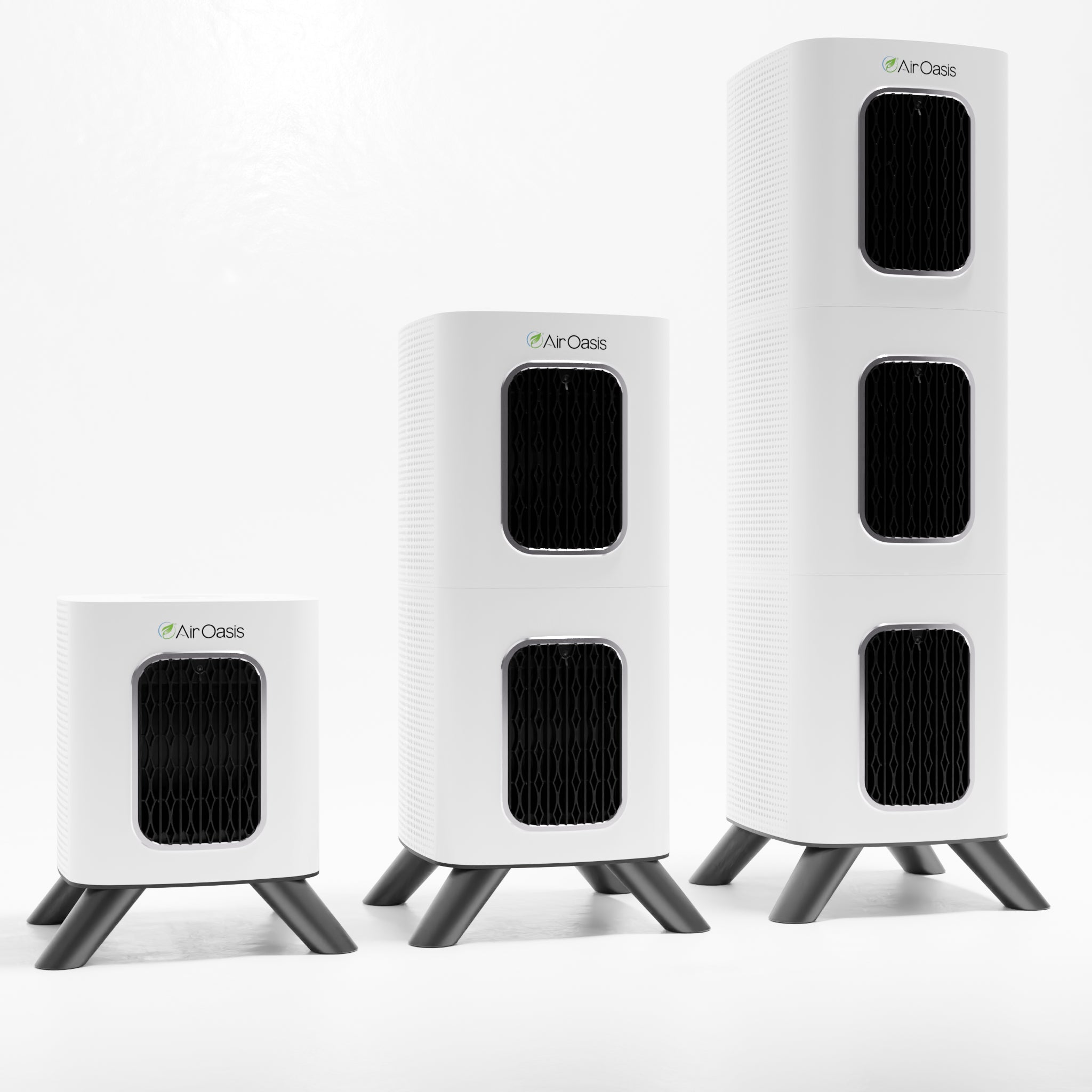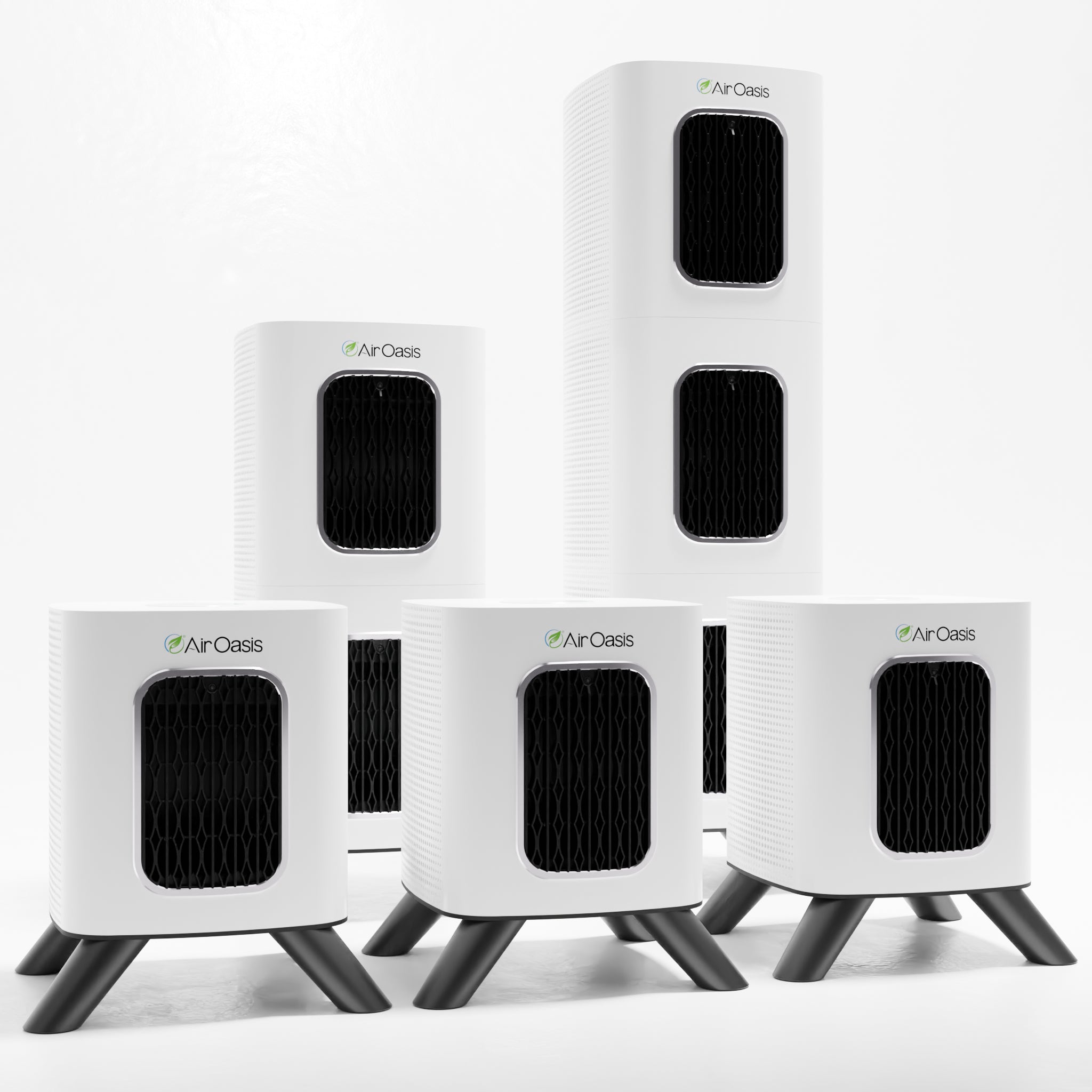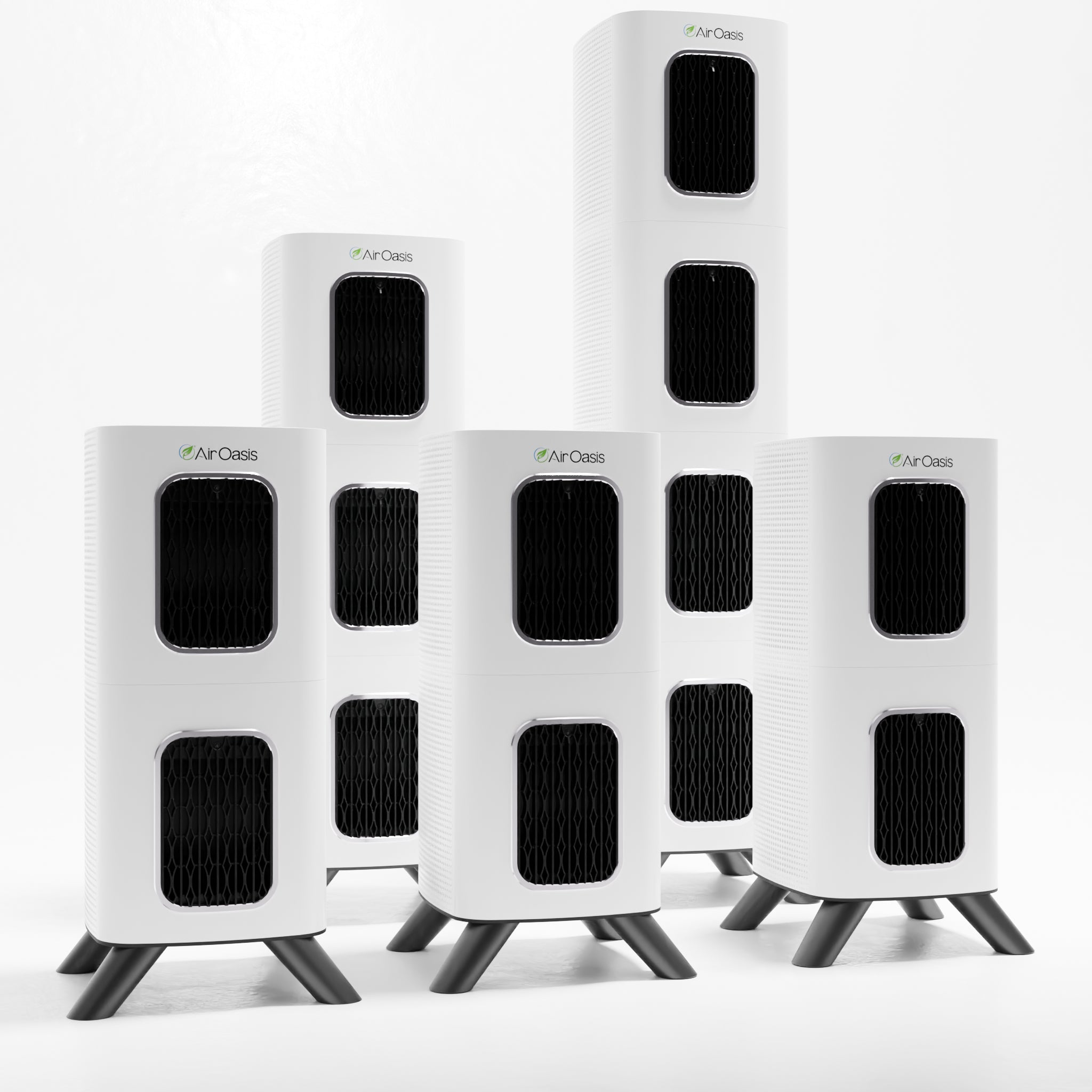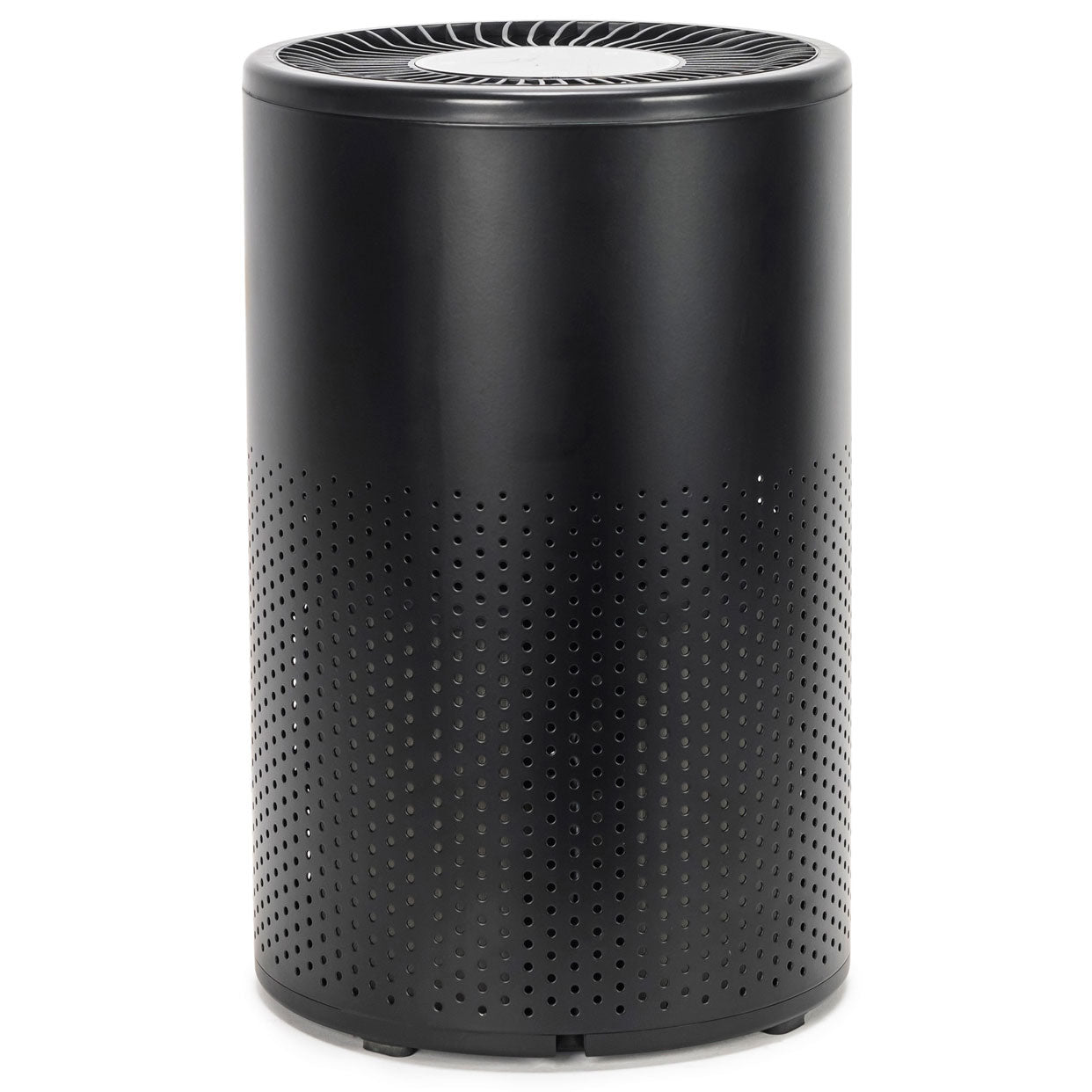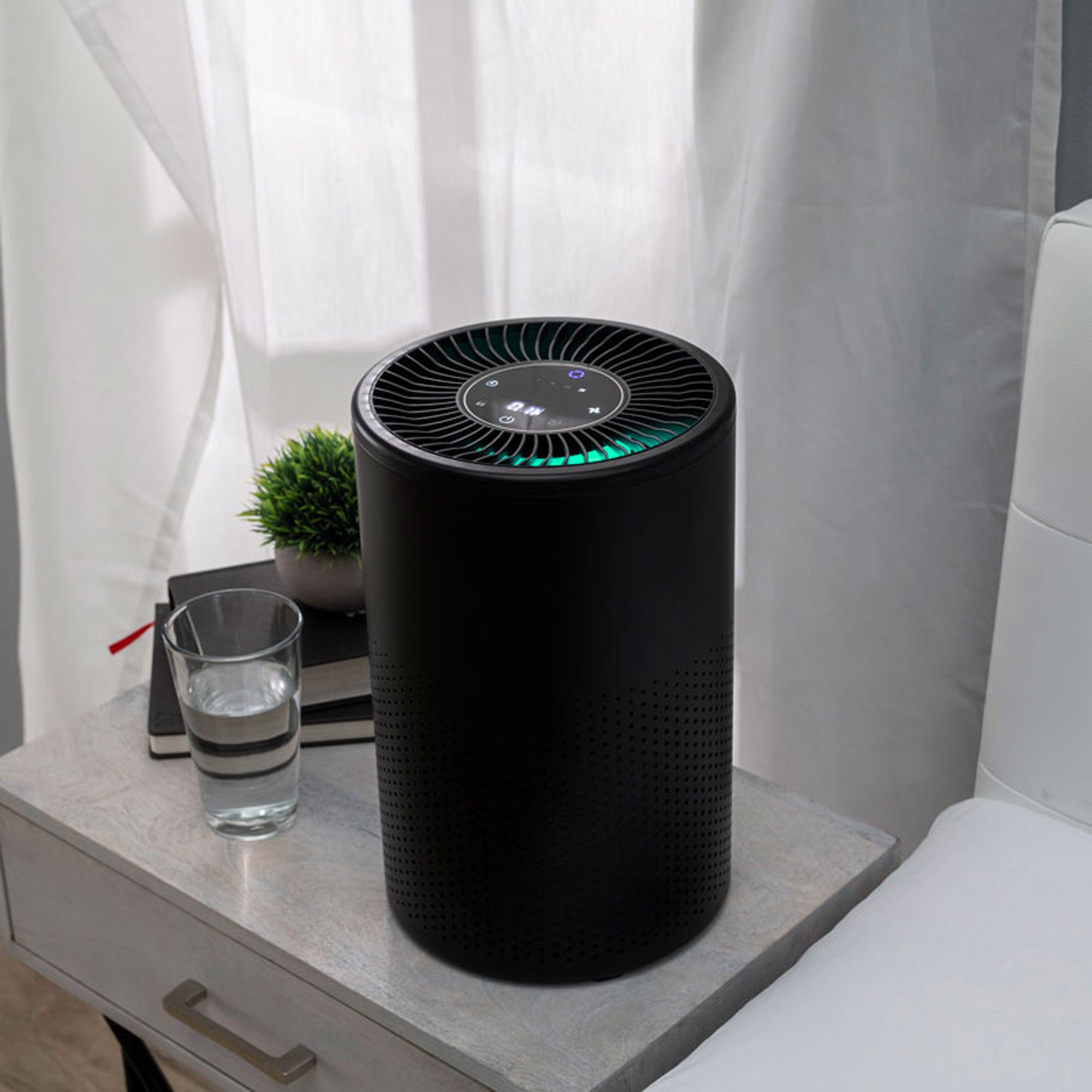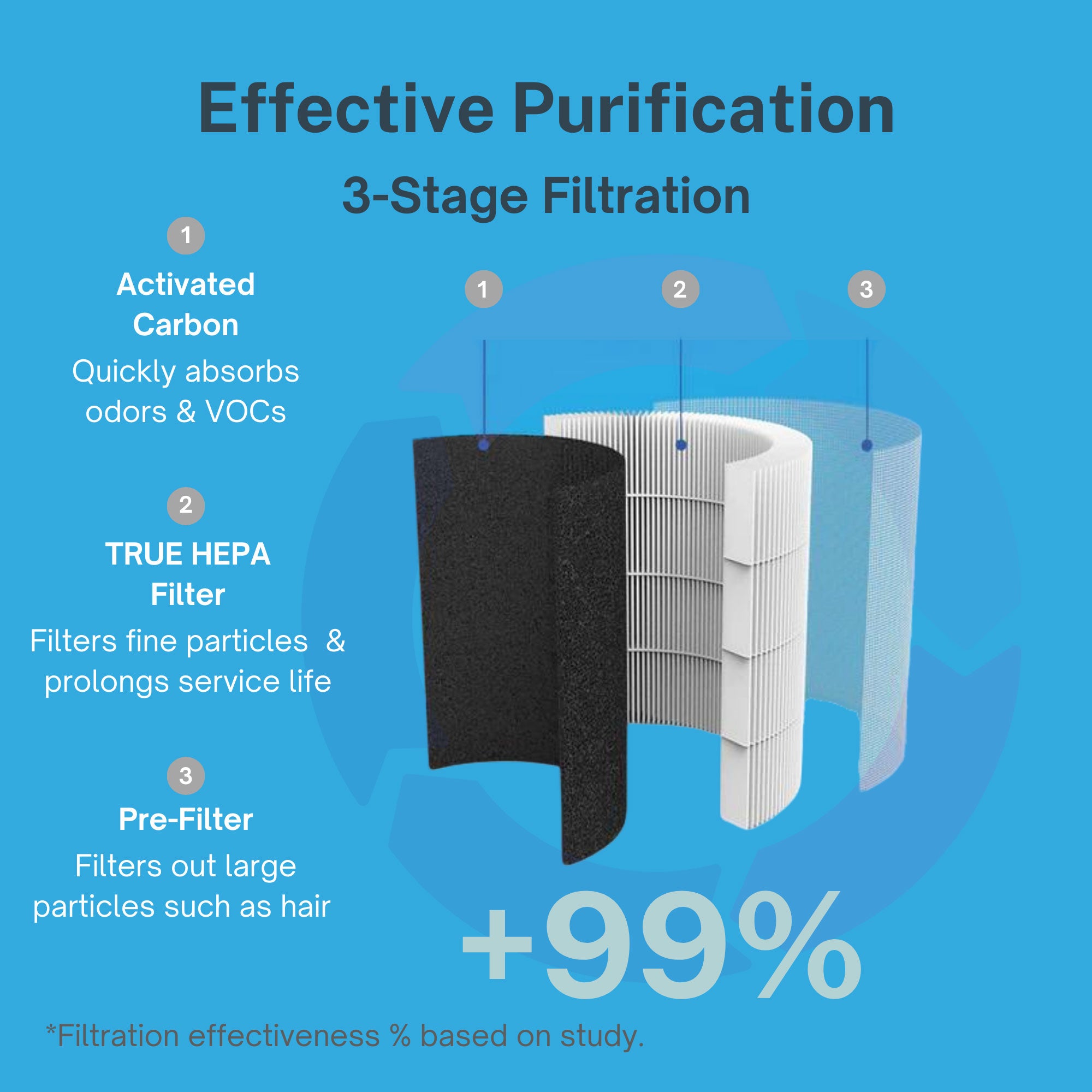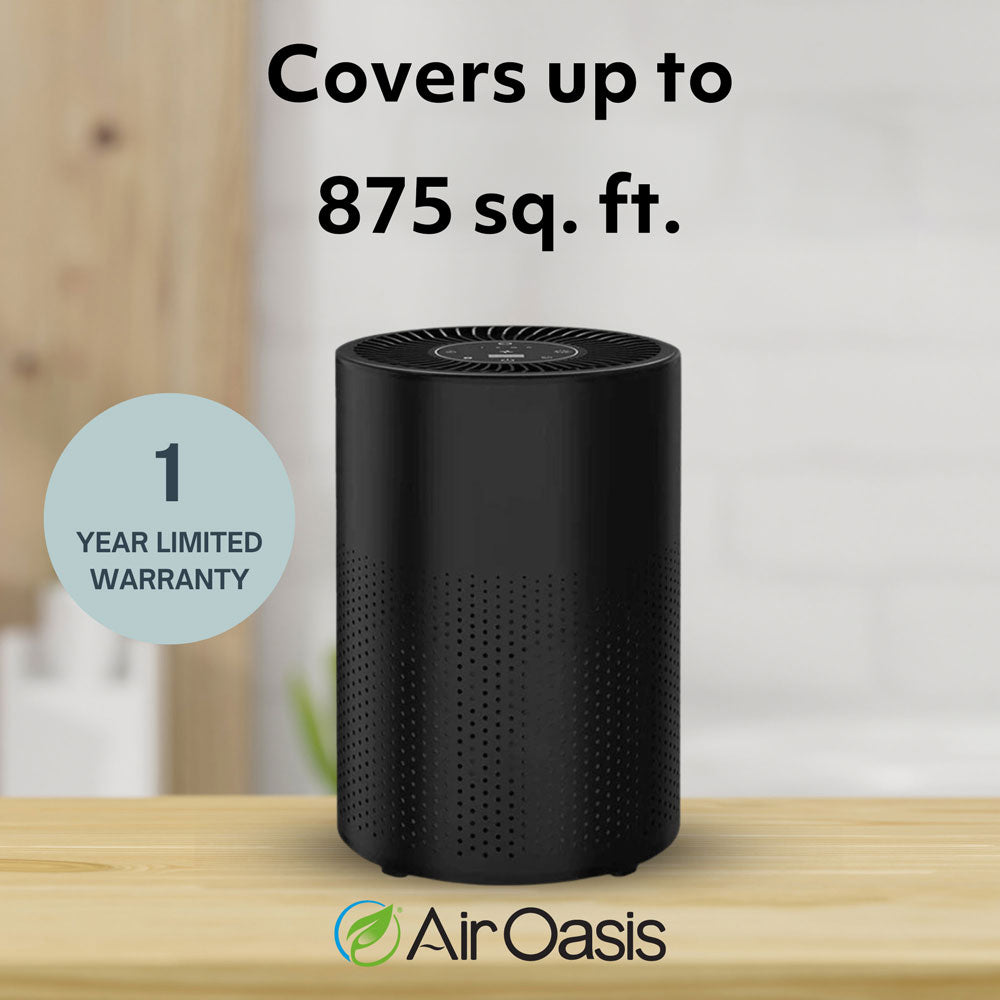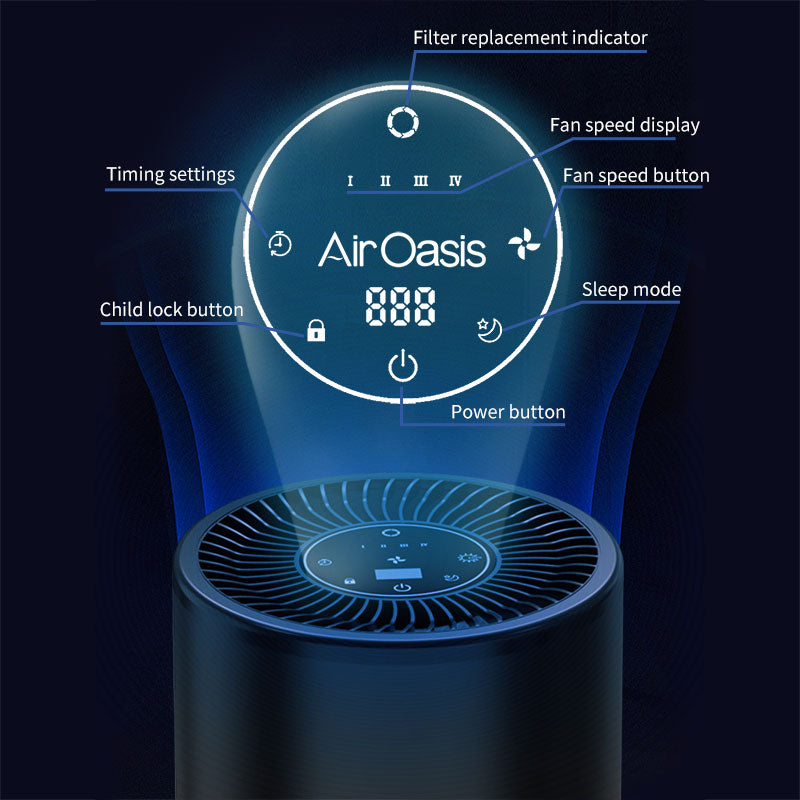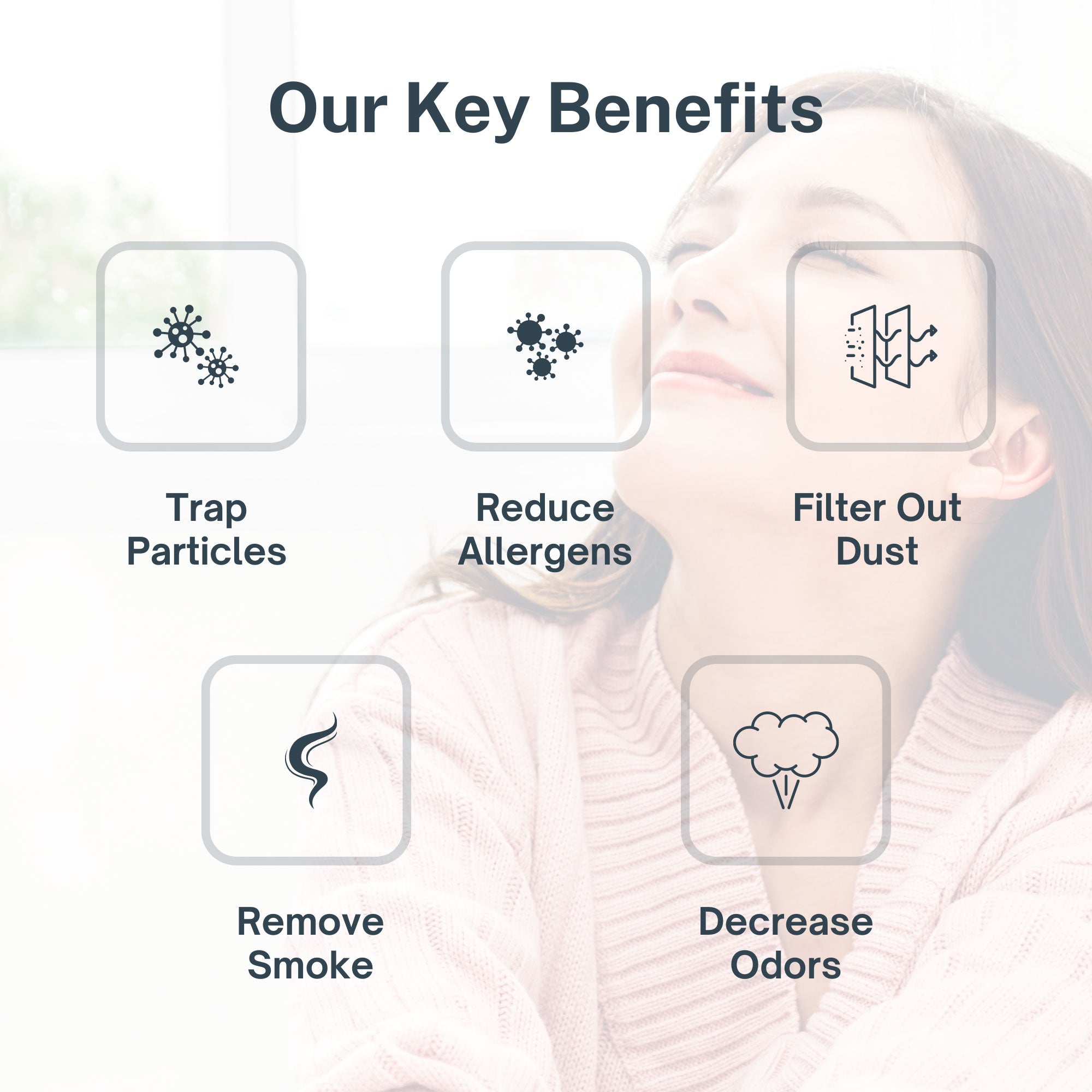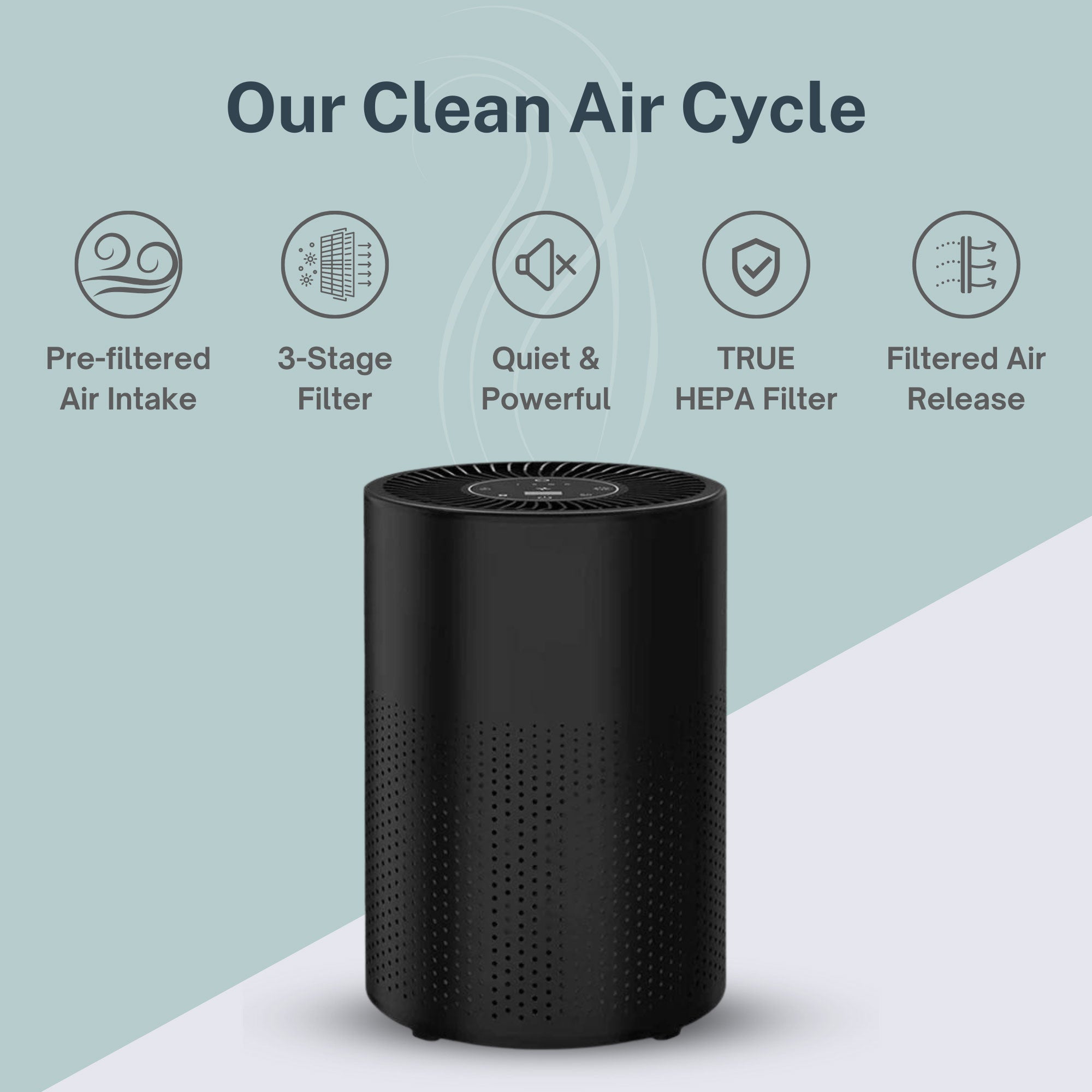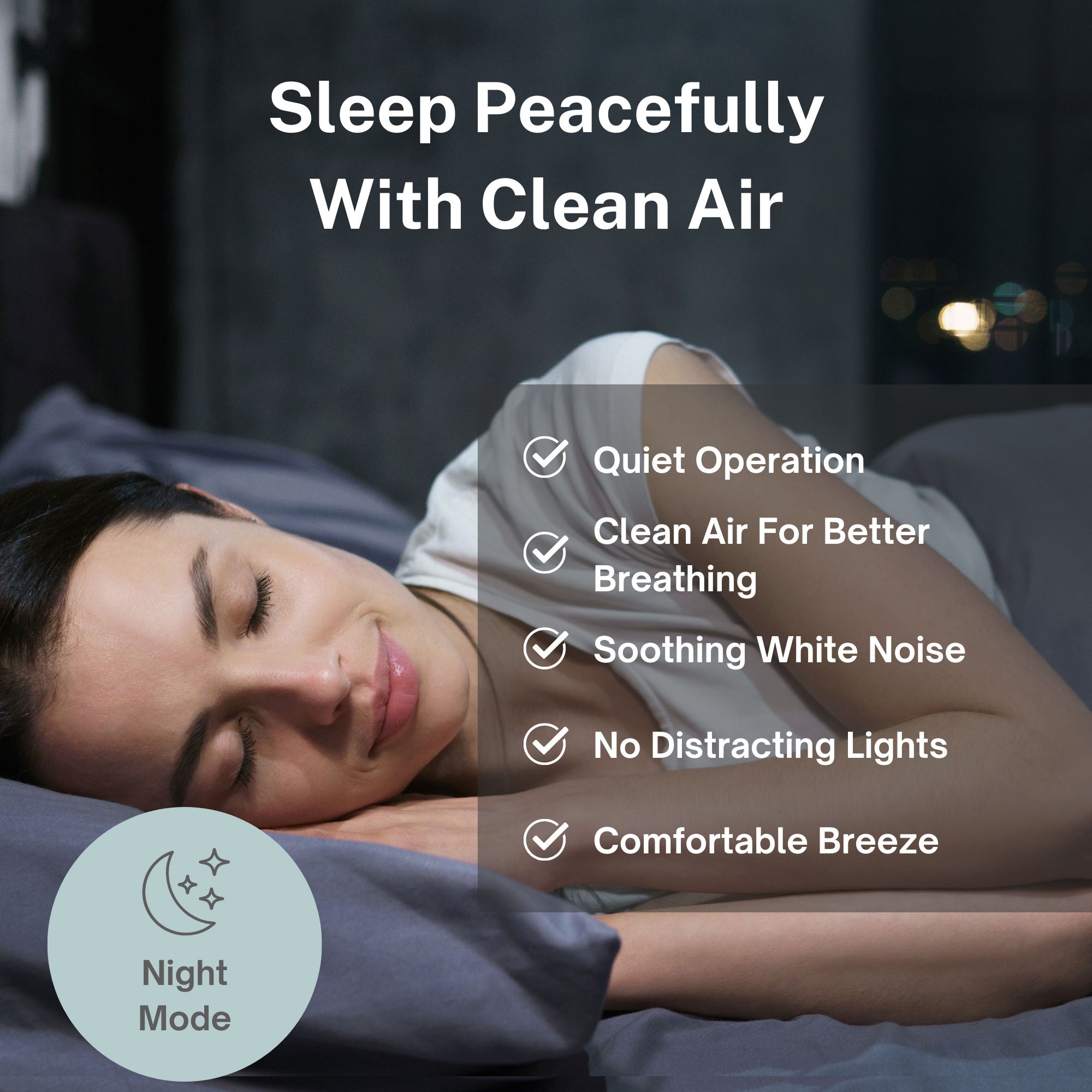When the seasons change, certain humans react to the changing weather by developing seasonal allergies. In other cases, we experience certain reactions and sensitivities to things we come in contact with, causing an allergic reaction in the body. Believe it or not, pets can experience allergies in the same way humans do; they just display symptoms differently.
Dogs and cats are the most common pets to experience notable allergies. If you suspect your dog or cat may have allergies — or your veterinarian has suggested this may be a cause of specific symptoms — understanding the source, symptoms, and treatments for pet allergies is helpful.
Just like pets experience allergies the way humans do, they also benefit from clean air the way we do. To help relieve your pet's allergies, shop the AirOasis iAdaptAir™ air purifier.
Common Allergies in Pets
Common allergens for pets include pollens, mold spores, dust mites, shed skin cells, insect proteins such as flea saliva, food, and some medications.
Just like humans, several types of pollen can cause allergic reactions. Similarly, household dust and the presence of mold spores spark an immune response in pets similar to the way it does in humans.
Different types of allergens are classified in different ways when diagnosing pet allergies. For example, clinicians will determine the type of allergen (i.e., dust, flea, food), the route of the allergen (skin contact or inhalation), immune reaction time, and the areas of the body affected by the allergen.
Since pets cannot use their words to tell us what they feel or where they feel discomfort, paying attention to the clinical signs helps diagnose which type of allergy your pet is experiencing.
Signs Your Pet Has Allergies
It’s common for dogs and cats to experience seasonal allergies just the way humans do; the symptoms just present themselves differently. Typically, dogs and cats experience most symptoms through their skin in the form of excessive scratching from irritated and itchy skin.
If you are concerned your dog or cat may be experiencing allergies, try to identify any of the following symptoms:
- Compulsive paw licking (in dogs)
- Inflamed, red, or infected skin
- Red, waxy ears or chronic ear infections
- Licking of anal glands
- Biting or scratching of fur or skin
- Excessive shedding of fur
- Difficulty breathing or any respiratory issues (this symptom is most common in cats)
The following are specific symptoms of allergies in dogs to be aware of:
- Sneezing.
- Itchiness.
- Itchy ears.
- Hives.
- Vomiting
- Red, inflamed skin
- Swelling of the face, ears, lips, eyelids, or earflaps.
- Diarrhea
Treating and Diagnosing Allergies in Pets
Because dogs are the most popular pet in the U.S., with 65.1 million U.S. households owning one, it is most common for pet owners to search for answers for their dog’s allergies.
While we may feel like we have a particular love language with our beloved dogs, no pet can tell us exactly what is happening in their body.
For this reason, diagnosing allergies in dogs, and pets in general, can be difficult. You can take a few steps to help relieve your dog's allergy symptoms.
Allergy Testing
One of the first things a veterinarian will suggest is comprehensive allergy testing–just like a doctor would suggest for us humans. Waiting and determining the source of the allergy from allergy testing can be a long and complicated process.
Elimination Diet
Your veterinarian may suggest an elimination diet in conjunction with or as part of allergy testing. This is especially important if a food allergy is specifically suspected.
Avoid the Cause of the Allergen
While you wait for the results of allergy testing or an elimination diet, you can help your pet by paying attention to signs and symptoms. If you suspect the allergen's source, try to eliminate your pet's exposure to that allergen. For instance, if you notice increased symptoms after your dog rolls in the grass, keep away from the lawn until allergy testing is complete.
Allergy Relief Medication
If the source of the allergen is discovered, or even if it isn’t, veterinarians may prescribe allergy medication for your pet.
Use an Air Purifier
If food allergies are eliminated, your pet is likely suffering from an allergen in their outdoor or indoor environment. Using a high-quality air purifier in your home will help reduce the allergens your pet breathes in. Especially in the case of allergies to mold spores or dust mites, an air purifier will remove up to 99% of the smallest allergy-inducing particles from your indoor air. If your pet spends most of its time indoors in a particular room of the house, consider installing an air purifier for maximum effectiveness.
Air Purifiers for Pet Allergies
Many of us treat our pets like they are a member of the family. Human or not, they sometimes serve as our very best friends. The truth is, even though pets are not humans, they can experience many different kinds of allergies, just like us humans.
Determining the cause and source of your pet’s allergy is crucial in selecting the best course of treatment. In many cases, pets suffer from allergies due to something in their indoor environment.
A HEPA-enabled air purifier reduces contaminants by up to 99% after less than an hour of use. For human and beloved pets alike, shop Air Oasis’ air purifiers to reduce pet allergies in your home.





